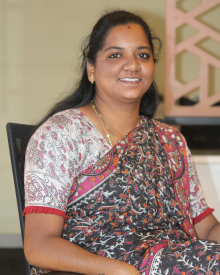Class 9 Science
English
Last updated
Wed, 30-Jul-2025
1. differentiates
materials, objects, organisms, phenomena, and processes, based on properties or
characteristics, such as, prokaryotes and eukaryotes, plant cell and animal
cell, diffusion and osmosis, simple and complex tissues, distance and
displacement, speed and velocity, balanced and unbalanced forces, elements,
compound and mixture, solution, suspension and colloid, isobars and isotopes,
etc.
2. classifies
materials, objects, organisms, phenomena, and processes, based on properties or
characteristics, such as, classification of plants and animals under various
hierarchical sub-groups, natural resources, classification of matter based on
their states (solid/liquid/gas) and composition (element/compound/mixture).
3. plans
and conducts investigations or experiments to arrive at and verify the facts,
principles, phenomena or to seek answers to queries on their own, such as, how
does speed of an object change? How do objects float/ sink when placed on the
surface of a liquid? Is there any change in mass when chemical reaction takes
place? What is the effect of heat on the state of substances? What is the
effect of compression on different states of matter? Where are stomata present
in different types of leaves? Where are growing tissues present in plants?
4. relates
processes and phenomena with causes and effects, such as, symptoms with
diseases and causal agents, tissues with their functions, production with use
of fertilisers, process of evaporation with cooling effect, various processes
of separation with the physical and chemical properties of the substances,
production of sound with vibrations of source, etc.
5. explains
processes and phenomena, such as, functions of different organelles, spread of
diseases and their prevention, effect of force on the state of motion of
objects, action and reaction, rotation and revolution of planets and
satellites, conservation laws, principle of separation of different gases from
air, melting, boiling, freezing, how bats use ultrasonic waves to catch prey,
etc.
6. calculates
using the data given, such as, distance, velocity, speed, frequency, work done,
number of moles in a given mass of substance, concentration of solution in
terms of mass-by-mass percentage of substances, conversion of Celsius scale to
Kelvin scale and vice versa, number of neutrons in an atom from atomic number
and mass number, speed of sound, kinetic and potential energies of an object,
boiling points of liquids to predict the order of their separation from the
mixture, etc.
7. draws
labelled diagrams, flow charts, concept maps, graphs, such as, biogeochemical
cycles, cell organelles and tissues, human ear, distance-time and speed-time
graphs, distribution of electrons in different orbits in an atom, process of
distillation and sublimation, etc.
8. analyses
and interprets graphs and figures such as, distance-time and velocity-time
graphs, computing distance, speed, acceleration of objects in motion,
properties of components of a mixture to identify the appropriate method of
separation, crop yield after using fertilisers.
9. uses
scientific conventions, symbols, and equations to represent various quantities,
elements, and units, such as, SI units, symbols of elements, formulae of simple
compounds, chemical equations, etc.
10. measures
physical quantities using appropriate apparatus, instruments, and devices, such
as, weight and mass of an object using spring balance, mass using a physical
balance, time period of a simple pendulum, volume of liquid using measuring
cylinder, temperature using thermometer, etc.
11. applies
learning to hypothetical situations, such as, weight of an object at moon,
weight of an object at equator and poles, possibility of life on other planets,
etc.
12. applies scientific concepts in daily life and
solving problems, such as, separation of mixtures, uses safety belts in
automobiles, covers walls of large rooms with sound absorbent material, follows
intercropping and crop rotation, takes preventive measures to control disease
causing agents, etc.
13. derives
formulae, equations, and laws, such as, mathematical expressions for Newton’s
second law of motion, law of conservation of momentum, expression for force of
gravity, equations of motion from velocity-time graphs, etc.
14. draws
conclusion, such as, classification of life forms is related to evolution,
deficiency of nutrients affects physiological processes in plants, matter is
made up of particles, elements combine chemically in a fixed ratio to form
compounds, effect of action and reaction on two different bodies, etc.
15. designs
models using eco-friendly resources, such as, 3D model of a cell, water
purification system, stethoscope, etc.
16. exhibits
values of honesty, objectivity, rational thinking, freedom from myths,
superstitious beliefs while taking decisions, respect for life, etc., such as,
records and reports experimental data exactly, myth that sexually transmitted
diseases are spread by casual physical contact, belief that vaccination is not
important for prevention of diseases, etc.
17. communicates
the findings and conclusions effectively, such as, those derived from
experiments, activities, and projects both in oral and written form using appropriate
figures, tables, graphs, and digital forms, etc. applies the interdependency
and interrelationship in the biotic and abiotic factors of environment to
promote conservation of environment, such as, organic farming, waste
management, etc.
18. describes
scientific discoveries and inventions, such as, discovery of various atomic
models, discovery of cell with invention of microscope, experiments of
Lavoisier and Priestley, beliefs regarding motion, discovery of real cause for
peptic ulcers, Archimedes principle, classification.
